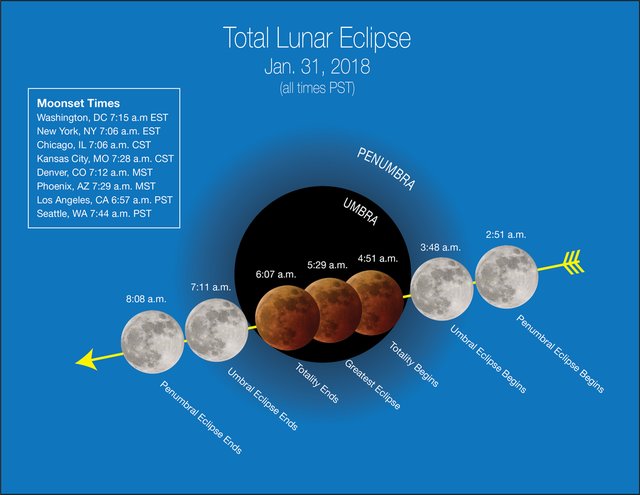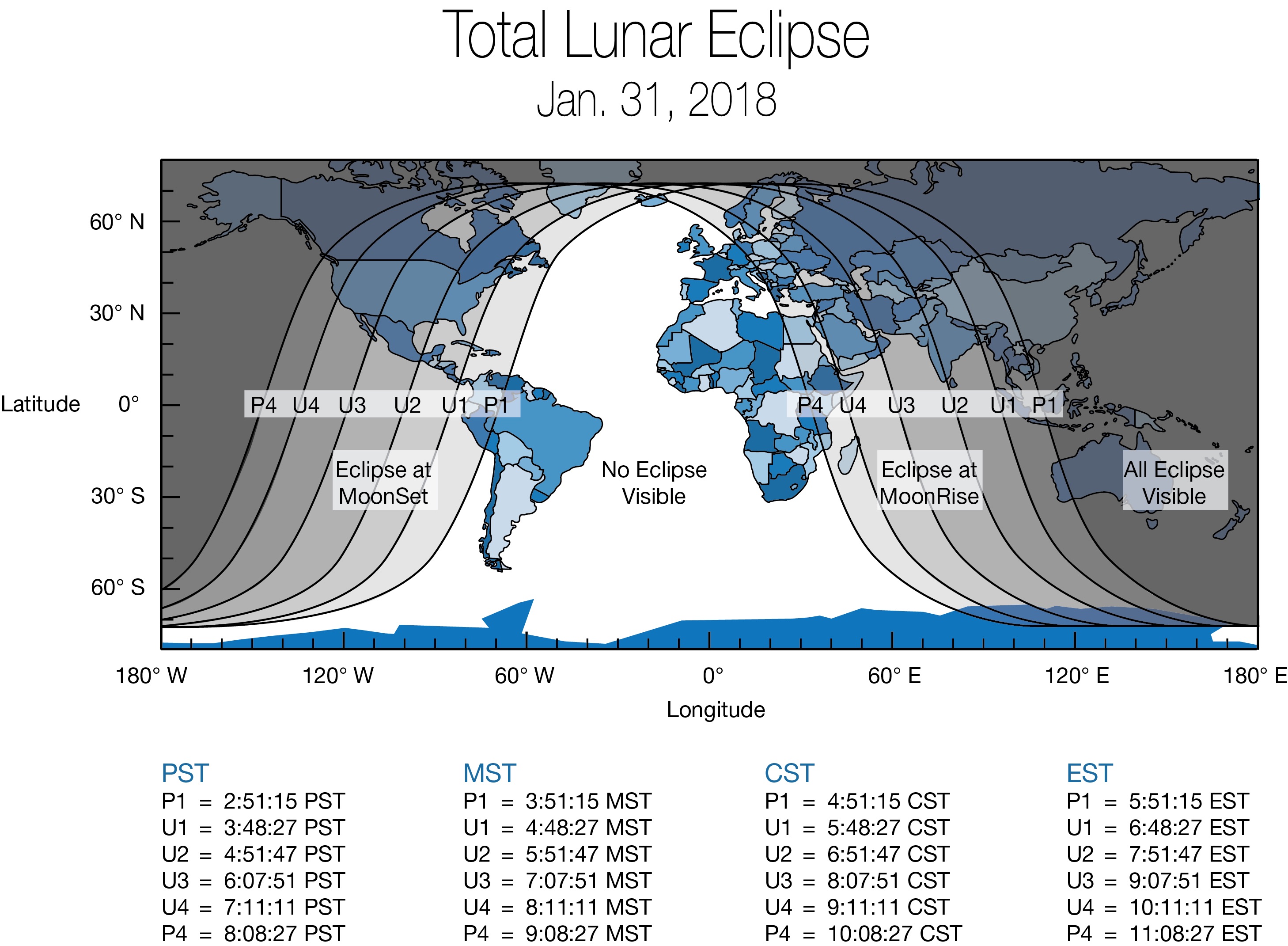Live Webcasts! How to Watch the Super Blue Blood Moon Online
The rare Super Blue Blood Moon eclipse of Jan. 31 will thrill early-morning skywatchers around the world on Wednesday, but you'll have plenty of ways to watch it if you don't live in a region that will see totality.
Skywatchers in California, western Canada, Hawaii, Alaska, Australia and eastern Asia should be able to see the entire eclipse, weather permitting — they will see the moon pass completely through Earth's shadow while simultaneously being at its closest to Earth (a "supermoon") and, in most areas, the second full moon of the month (a "Blue Moon"). Early risers elsewhere can turn to live webcasts to watch the whole show.
NASA will offer a live view of the moon starting at 5:30 a.m. EST (1030 GMT), which you can watch here on Space.com, courtesy of NASA TV. You can also follow along with the webcast on @NASAMoon, NASA's lunar Twitter account. [Super Blue Blood Moon 2018: When, Where and How to See It]

Starting at 5:45 a.m. EST (1045 GMT), the Slooh online telescope will livestream all 5 hours and 17 minutes of the eclipse, as the moon passes completely through Earth's shadow, from partners in Hawaii, Australia, New Zealand and Asia. Slooh's experts will narrate the webcast starting at 7 a.m. EST (1200 GMT) to share the science and ancient lore related to lunar eclipses, supermoons and Blue Moons. You can watch the webcast live on Slooh.com, or on Space.com, courtesy of Slooh.
During the webcast, Slooh will also announce the winner and runners-up of its first Fenimore Cooper Prize for eclipse writing, according to a statement from Slooh.

From 3:45 a.m. to 7 a.m. PST, the Griffith Observatory in Los Angeles will host a free public eclipse-viewing event that you can attend if you're in the area. But even if you aren't local, you can tune in to the Griffith Observatory's live online broadcast of the eclipse, viewable here. The webcast will stretch from 5:45 a.m. to 10 a.m. EST (1045 to 1500 GMT), and within 2 hours, a time-lapse version of the eclipse will be available at that same location or on YouTube, according to a statement from the Griffith Observatory.
And finally, the Virtual Telescope Project will livestream the total lunar eclipse from telescopes in Australia and the United States starting at 6:30 a.m. EST (1130 GMT) and ending at 11 a.m. EST (1600 GMT), as well as the "Super Blue Moon" rising above the skyline of Rome later that day. Both events, which can be seen at virtualtelescope.eu, will have commentary by Gianluca Masi, an astrophysicist and the project's director.
Get the Space.com Newsletter
Breaking space news, the latest updates on rocket launches, skywatching events and more!
Whether you watch the entire eclipse, make time to see the moon turn reddish for more than an hour at totality or just drop in for a quick online look, happy viewing!
Editor's note: If you capture an amazing photo of video of the Jan. 31 total lunar eclipse and would like to share it with Space.com for a story or gallery, send images and comments to: spacephotos@space.com.
Email Sarah Lewin at slewin@space.com or follow her @SarahExplains. Follow us @Spacedotcom, Facebook and Google+. Original article on Space.com.
Join our Space Forums to keep talking space on the latest missions, night sky and more! And if you have a news tip, correction or comment, let us know at: community@space.com.

Sarah Lewin started writing for Space.com in June of 2015 as a Staff Writer and became Associate Editor in 2019 . Her work has been featured by Scientific American, IEEE Spectrum, Quanta Magazine, Wired, The Scientist, Science Friday and WGBH's Inside NOVA. Sarah has an MA from NYU's Science, Health and Environmental Reporting Program and an AB in mathematics from Brown University. When not writing, reading or thinking about space, Sarah enjoys musical theatre and mathematical papercraft. She is currently Assistant News Editor at Scientific American. You can follow her on Twitter @SarahExplains.









